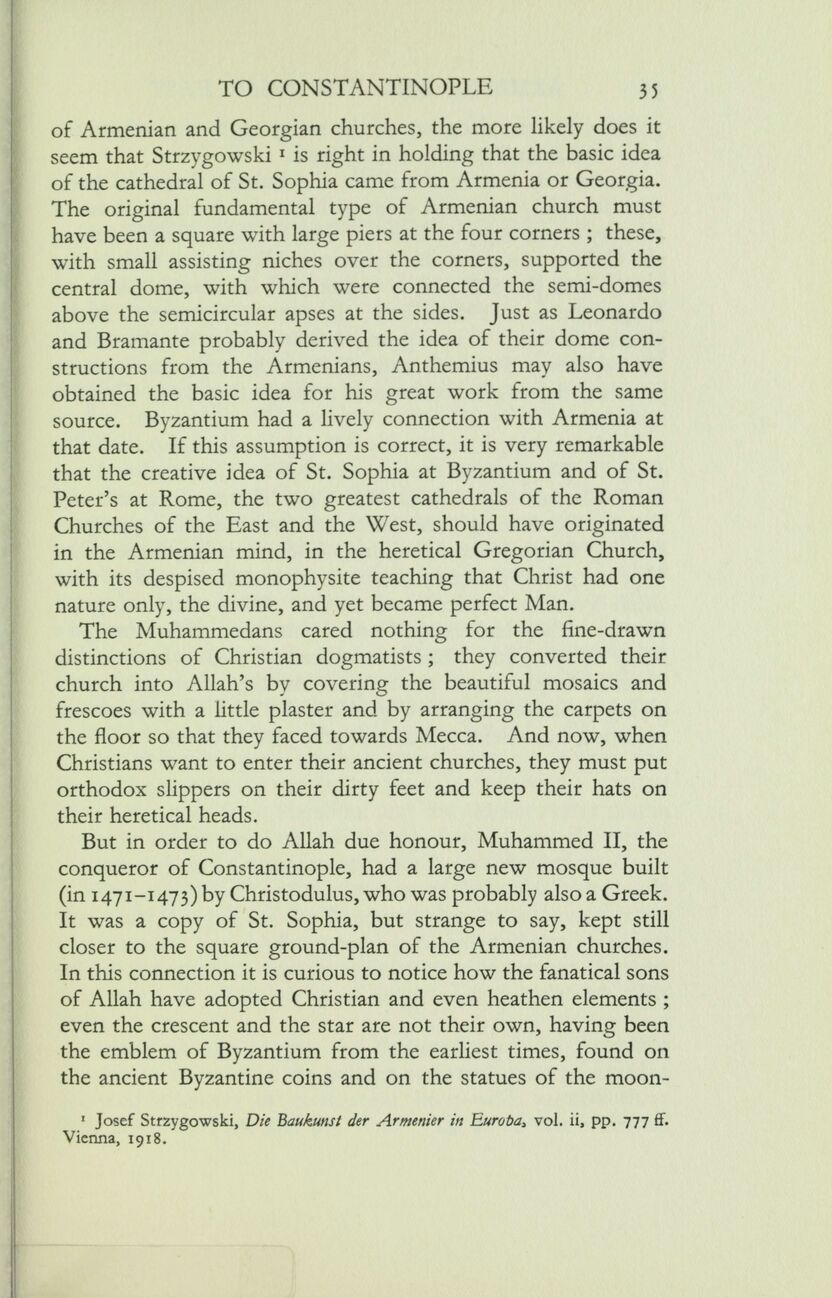
Full resolution (JPEG) - On this page / på denna sida - I. To Constantinople

<< prev. page << föreg. sida << >> nästa sida >> next page >>
Below is the raw OCR text
from the above scanned image.
Do you see an error? Proofread the page now!
Här nedan syns maskintolkade texten från faksimilbilden ovan.
Ser du något fel? Korrekturläs sidan nu!
This page has never been proofread. / Denna sida har aldrig korrekturlästs.
TO CONSTANTINOPLE 35
of Armenian and Georgian churches, the more likely does it
seem that Strzygowski l is right in holding that the basic idea
of the cathedral of St. Sophia came from Armenia or Georgia.
The original fundamental type of Armenian church must
have been a square with large piers at the four corners ; these,
with small assisting niches over the corners, supported the
central dome, with which were connected the semi-domes
above the semicircular apses at the sides. Just as Leonardo
and Bramante probably derived the idea of their dome con
structions from the Armenians, Anthemius may also have
obtained the basic idea for his great work from the same
source. Byzantium had a lively connection with Armenia at
that date. If this assumption is correct, it is very remarkable
that the creative idea of St. Sophia at Byzantium and of St.
Peter’s at Rome, the two greatest cathedrals of the Roman
Churches of the East and the West, should have originated
in the Armenian mmd, in the heretical Gregorian Church,
with its despised monophysite teaching that Christ had one
nature only, the divine, and yet became perfect Man.
The Muhammedans cared nothing for the fine-drawn
distinctions of Christian dogmatists ; they converted their
church into Allah’s by covering the beautiful mosaics and
frescoes with a little plaster and by arranging the carpets on
the floor so that they faced towards Mecca. And now, when
Christians want to enter their ancient churches, they must put
orthodox slippers on their dirty feet and keep their hats on
their heretical heads.
But in order to do Allah due honour, Muhammed 11, the
conqueror of Constantinople, had a large new mosque built
(in 147i-i473)by Christodulus, who was probably alsoa Greek.
It was a copy of St. Sophia, but strange to say, kept still
closer to the square ground-plan of the Armenian churches.
In this connection it is curious to notice how the fanatical sons
of Allah have adopted Christian and even heathen elements ;
even the crescent and the star are not their own, håving been
the emblem of Byzantium from the earliest times, found on
the ancient Byzantine coins and on the statues of the moon
1 Josef Strzygowski, Die Baukunst der Armenier in Euroba* vol. ii, pp. 777 ff.
Vicnna, 1918.
<< prev. page << föreg. sida << >> nästa sida >> next page >>